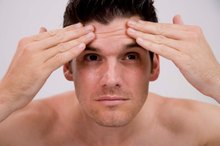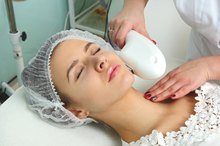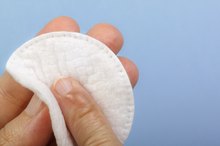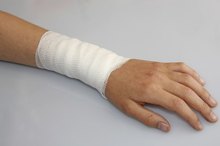How to Treat Burned or Irritated Skin From Benzoyl Peroxide
Benzoyl peroxide is the active ingredient in many over-the-counter topical acne medications 3. It works by killing acne-causing bacteria, removing excess oil and causing skin dryness and minor peeling, which speeds up the healing of damaged skin. When used correctly, benzoyl peroxide can be an effective acne medication. But if used too aggressively -- in higher concentrations or too frequently -- or if used on sensitive skin, it can lead to irritation, excessive dryness or even burns.
While minor irritation or dryness can be expected in the initial weeks of using benzoyl peroxide, it's not normal to experience pain, severe redness, swelling or burns. Stop using the product if you have these symptoms, and consult your doctor or dermatologist for acne treatment advice. If your burn is painful and blistering, see a doctor in order to optimize healing, reduce the risk of infection and minimize scarring.
How to Treat Turf Burns
Learn More
Most often, skin irritation and minor, skin burns can be treated at home. Start by cooling the face with a cold compress. Apply for about 10 minutes or until the pain subsides. If blisters occur, do not break or pop them, as this can delay healing and increase the risk of infection.
To keep skin moist, apply a thin layer of petroleum jelly to the irritated skin or minor burn. According to the American Academy of Dermatology, you do not need to use antibiotic cream for skin burns, and should avoid home remedies such as butter, toothpaste or ointments 25. Care for irritated skin by using a non-comedogenic and oil-free moisturizer, which won't clog your pores and can soothe the dryness and irritation you might experience from using benzoyl peroxide.
How to Treat a Salicylic Acid Burn
Learn More
If possible, cover the burn with a nonstick, sterile bandage to protect it while it heals. If this is not practical due to the location or size, keep the skin clean and moist as it heals. It may take at least several days for the irritation or minor burn to heal. In the meantime, continue to avoid acne medication, and apply cool compresses along with petroleum jelly or lotion.
Tips
Most over-the-counter benzoyl peroxide preparations range in concentration from 2.5 to 10 percent, and prescription drugs may be even more powerful. To treat acne with benzoyl peroxide, start with the weakest concentration, to assess if it works for you. The optimal concentration should cause mild dryness and peeling, in order to be effective against acne, but should not make your skin burn, sting or hurt. If you do not notice dryness or mild peeling after a few weeks, and have no noticeable improvement in acne, try the the next higher concentration. If your skin has too much irritation or dryness, change to a weaker concentration or apply every 2 to 3 days instead of daily.
Warnings
See your doctor if your burn is large, or if you have blisters, swelling or oozing from the damaged area. Do not pick a the skin as it heals, and do not pop any blisters as this will delay healing and increase the risk of infection.
Reviewed by Kay Peck, MPH RD
Related Articles
References
- Drugs.com: Benzoyl Peroxide Side Effects
- American Academy of Dermatology: How to Treat a First-Degree, Minor Burn
- Journal of Clinical and Asthetic Dermatology: What is the Role of Benzoyl Peroxide Cleansers in Acne Management?
- Merck Manual: Burns
- American Academy of Dermatology: Moisturizer: Why You May Need it if You Have Acne
- Kawashima M, Nagare T, Doi M. Clinical efficacy and safety of benzoyl peroxide for acne vulgaris: Comparison between Japanese and Western patients. J Dermatol. 2017;44(11):1212–1218. doi:10.1111/1346-8138.13996
- Sevimli Dikicier B. Topical treatment of acne vulgaris: efficiency, side effects, and adherence rate. J Int Med Res. 2019;47(7):2987–2992. doi:10.1177/0300060519847367
- Mills OH, Kligman AM, Pochi P, Comite H. Comparing 2.5%, 5%, and 10% benzoyl peroxide on inflammatory acne vulgaris. Int J Dermatol. 1986;25(10):664-7. doi:10.1111/j.1365-4362.1986.tb04534.x
- Baldwin HE. Pharmacologic treatment options in mild, moderate, and severe acne vulgaris. Seminars in Cutaneous Medicine and Surgery. 2015 Sep;34(5S):S82-S85. doi:10.12788/j.sder.2015.0162
- Mohammad TF, Burkart CG. Acne therapeutics: A closer look at benzoyl peroxide. Skinmed. 2015 Mar-Apr;13(2):94-6.
Writer Bio
Erica Roth has been a writer since 2007. She is a member of the Society of Professional Journalists and was a college reference librarian for eight years. Roth earned a Bachelor of Arts in French literature from Brandeis University and Master of Library Science from Simmons College Graduate School of Library and Information Science. Her articles appear on various websites.







